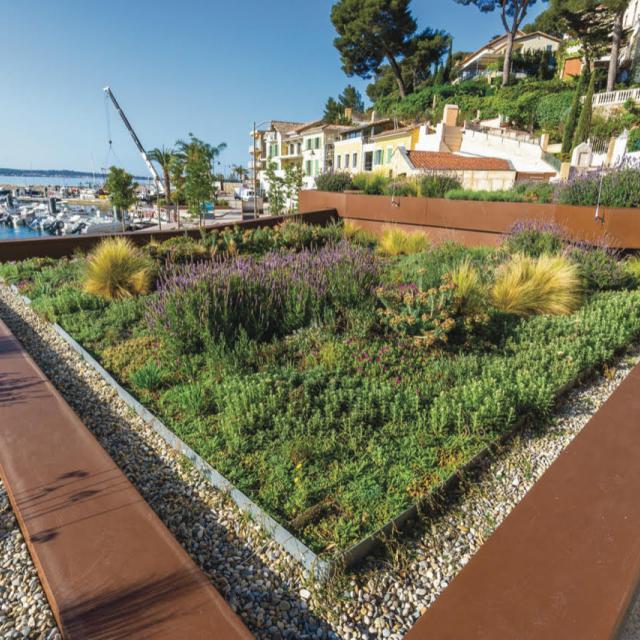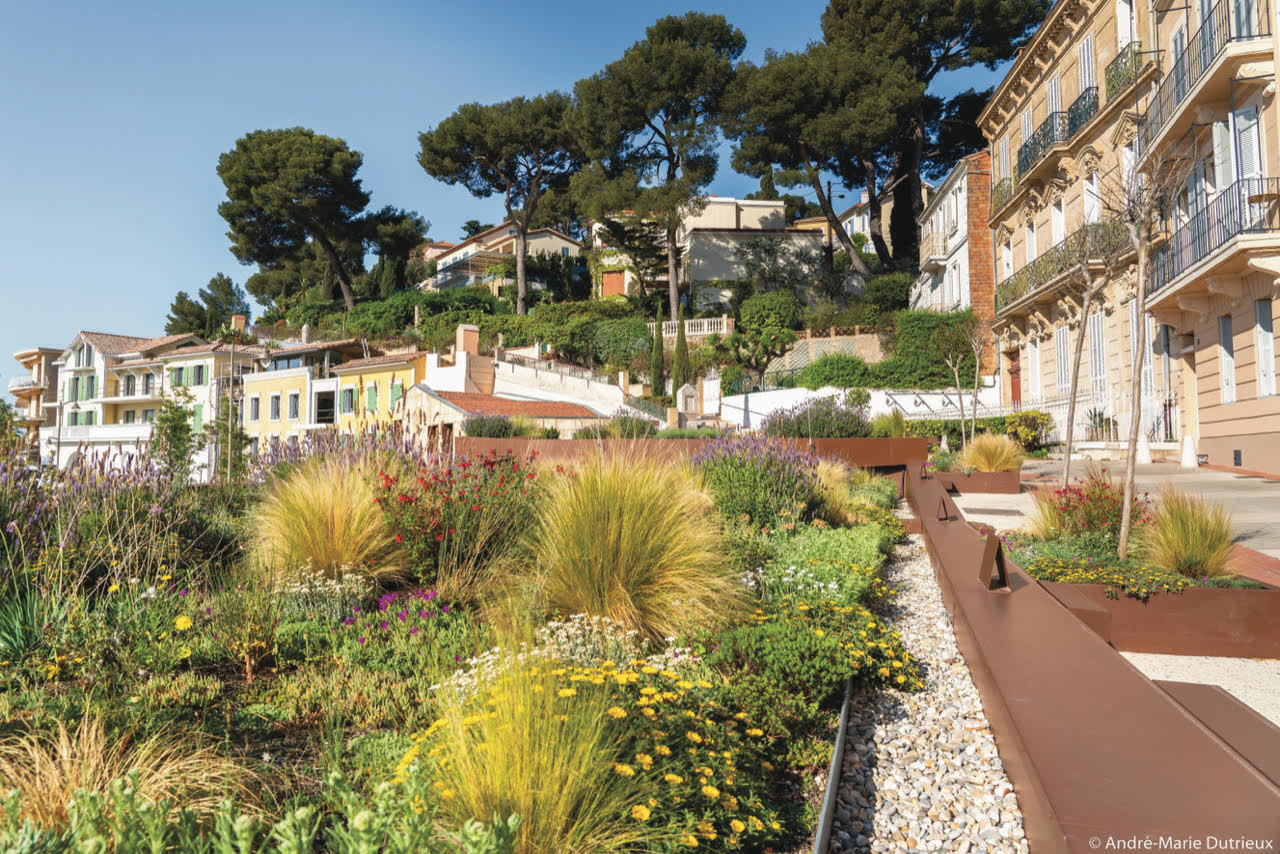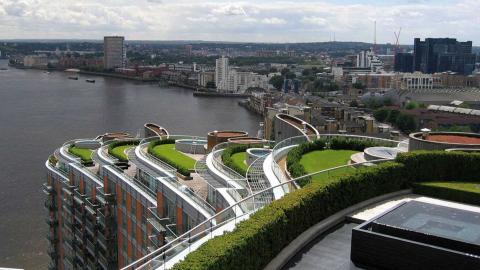Sanary-sur-Mer (83) has undertaken the redevelopment of its port, including a new harbour-master’s office. The client’s ambition was to ensure that this building was covered with vegetation so that the pedestrians and surrounding homes have a view of the roofs of the building.
The town of Sanary is also very mindful of its flowers, which is challenging given the Mediterranean climate, its proximity to the sea and the roof support. We contacted Mr. Clément Paladan, a sales engineer at Ecovégétal, who dealt with the installation.

Local species are carefully selected to recreate a Mediterranean garden.
One of the town’s demands was to have a substantial proportion of local species.
To achieve this, the company Ecovégétal, which designed and installed the solution, worked on the creation of a selection of Mediterranean plants together with the most renowned expert on drought-resistant gardens in the South-East of France, Mr Filippi and his nursery in Mèze.
“Plants that are suitable for the seafront and resistant to any potential droughts were selected”, explained Clément Paladan to us.
Ecovégétal has retained the Lavandulis system, which has some fifteen species including Achillea, Delosperma, Euphorbia, Santolina, Lavandula, Stipa, etc. with some endemic plants added, planted upstream, so that in the end a third of the plants are local species.
“The plants are also selected for aethetic reasons at the levels of the different layers, the objective being to recreate the strata as they occur in nature”, explained Clément Paladan.
For ground cover, covering plants of the sedum type have been chosen (two different kinds).
Then the plants of the immortal, euphorbias and santoline type, forming low cushion-like balls, provide some volume and do not grow above the rest of the vegetation.
The third stratum: taller balls emerge, with lavender and myrtle-type plants, and for the last stratum, there are emergent plants growing a little taller, such as stipas, which are green in mid-season and will dry up in summer.
“The range of colours of the different types of foliage (grey, silver, green...) corresponds to the colours you will find in the scrubland when you walk around Marseilles. Furthermore, the plants have been selected so that they do not all flower at the same time,” comments Clément Paladin.
The roof-terrace section has 22 distinct types of plants and 18 flower boxes. All of the plants are capable of withstanding a more or less lengthy drought (2 to 4 months).
The planting of the vegetation, at a density of twelve units per square metre, is carried out in pots or small containers of 3 to 5 L.
Optimum water management
At the same time, consideration was given to the retention of water, to delay runoff and ensure that the plants have a supply of water.

The substrate used has specific features in terms of capillary rise. A Jardilight 1.1 substrate was installed to a thickness of 20 to 25 cm, such a height being necessary in a Mediterranean climate bearing in mind the specific climatic conditions (drought and heavy rains). The depth of the substrate is 50 cm in the plant containers.
“We use Jardilight for Mediterranean climates because it is rich in organic matter. Moreover, this kind of substrate is perfect for intensive and semi-intensive roofs”, explained Mr. Paladan. In the case of an extensive roof, Ecovégétal offers another type of substrate.
Most green roofs have enough water. That is particularly the case with extensive green roofs which are mainly composed of plants that are drought resistant and require little water: sedums, grasses and other perennials. However, depending on the type of vegetation chosen and the geographical location, the installation of an irrigation system is essential. This is the case here, within the context of a semi-intensive vegetation in a southern zone.
“Regular irrigation is required for three years, the time required for a rooting system to develop”, commented Mr. Paladan. Rain Bird’s wired subsurface drip irrigation system was installed at a depth of 5 cm.
“Initially, in the summer, we had to irrigate every day, 10 minutes in the morning and 10 minutes in the evening. We then reduced this to 3 irrigations per week and now we are at two irrigations per week, but only during the dry periods.”, added Mr. Paladan. And he continued: “When the rooting system has developed enough to withstand the drought, then one irrigation per month is sufficient.”
At the beginning, Ecovégétal was responsible for managing the irrigation, but the Sanary sur Mer town council took over. Maintenance is now conducted by the town's service departments and is based on three annual visits.
Furthermore, a drainage system that retains the water was installed, facilitating the capillary rise of the water. This prevents the excess irrigation water from finding its way directly to the sewage systems. The water that reaches the substrate is reused as the drainage layer in question has a certain retention capacity (3.5 L/m²). Finally, in particular, it is the matting laid on the underside (made from 100% recycled fibers) that acts as a means of retention (10 L/m²). The system took 3 days to construct.
Sometime after installation it was noticed that the roots had become bunched and fibrous and had grown right down to the full depth of the substrate, providing proof that the plants extend as far as the matting to look for water.

